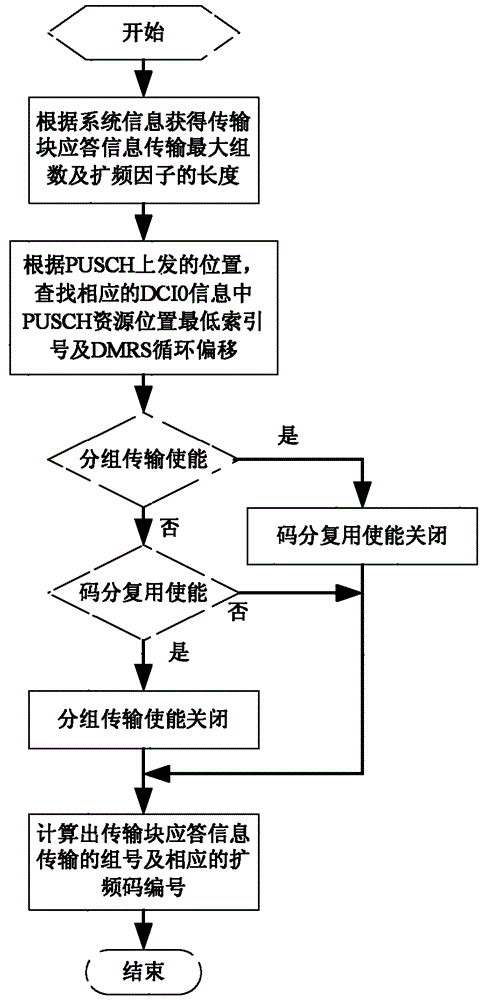Uplink Transmission Data Block Response Information Resource Allocation Method and System
A technology for answering information and transmitting data, which is applied in the direction of transmission path sub-channel allocation, transmission system, digital transmission system, etc., to achieve the effects of reducing the amount of detection calculation, saving frequency domain resources, and ensuring performance
- Summary
- Abstract
- Description
- Claims
- Application Information
AI Technical Summary
Problems solved by technology
Method used
Image
Examples
application example 1
[0080] The description is made by taking the user equipment simultaneously sending uplink data of two transmission blocks as an example. In this example, the acknowledgment information of the two transport blocks is delivered in different PHICH groups, and the feedback process is described in detail as follows:
[0081] 1. According to the UL / DL configuration information and the Ng parameter provided by the upper layer of the system, calculate the total number of PHICH groups available to the current base station
[0082] 2. Extract the lowest PRB index information and DMRS cyclic offset information when PUSCH is sent from DCI0 DMRS .
[0083] 3. According to the information provided in 1 and 2, use the formula (1) to calculate the total number of PHICH groups when the PHICH is delivered.
[0084] n PHICH group = ( I PRB lowest ...
application example 2
[0090] The description is made by taking the user equipment simultaneously sending uplink data of two transmission blocks as an example. In this example, the response information of the two transport blocks is delivered in the same PHICH group, and the specific description is as follows:
[0091] 1. According to the UL / DL configuration information and the Ng parameter provided by the upper layer of the system, calculate the total number of PHICH groups available to the current base station
[0092] 2. Extract the lowest PRB index information and DMRS cyclic offset information when PUSCH is sent from DCI0.
[0093] 3. According to the information provided in 1 and 2, use the formula (1) to calculate the total number of PHICH groups when the PHICH is issued.
[0094] n PHICH group = ( I PRB lowest + n ...
application example 3
[0100] In this example, taking the number of transmission blocks of the user equipment as M as an example, the delivery of response information is described, and the process is described as follows.
[0101] 1. According to the UL / DL configuration information and the Ng parameter provided by the upper layer of the system, calculate the total number of PHICH groups available to the current base station
[0102] 2. Extract the lowest PRB index information and DMRS cyclic offset information when PUSCH is sent from DCI0.
[0103] 3. According to the information provided in 1 and 2, calculate the total number of PHICH groups when the PHICH is delivered.
[0104] n PHICH group = ( I PRB lowest + n DMRS + G Enable · ...
PUM
 Login to View More
Login to View More Abstract
Description
Claims
Application Information
 Login to View More
Login to View More - R&D
- Intellectual Property
- Life Sciences
- Materials
- Tech Scout
- Unparalleled Data Quality
- Higher Quality Content
- 60% Fewer Hallucinations
Browse by: Latest US Patents, China's latest patents, Technical Efficacy Thesaurus, Application Domain, Technology Topic, Popular Technical Reports.
© 2025 PatSnap. All rights reserved.Legal|Privacy policy|Modern Slavery Act Transparency Statement|Sitemap|About US| Contact US: help@patsnap.com



